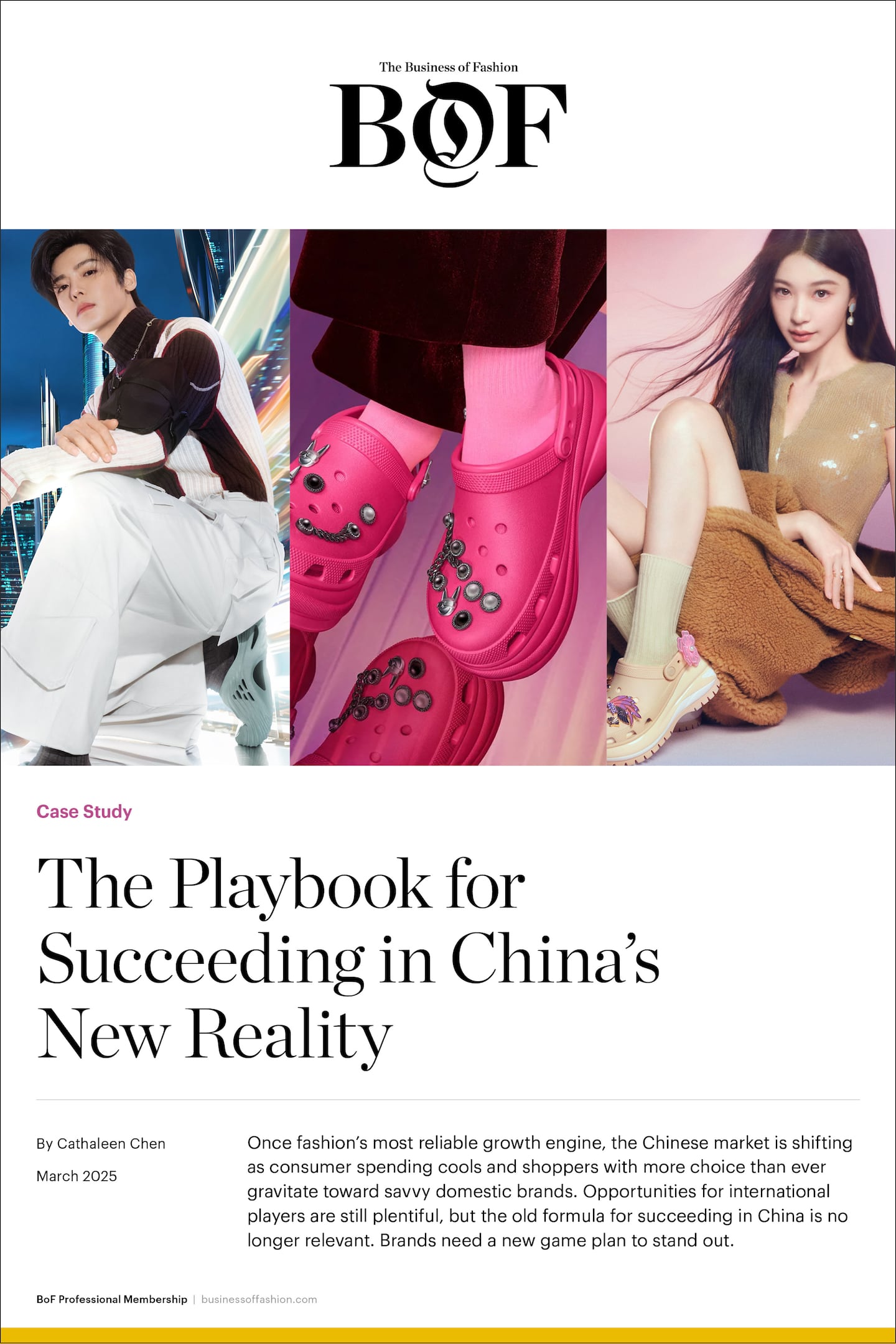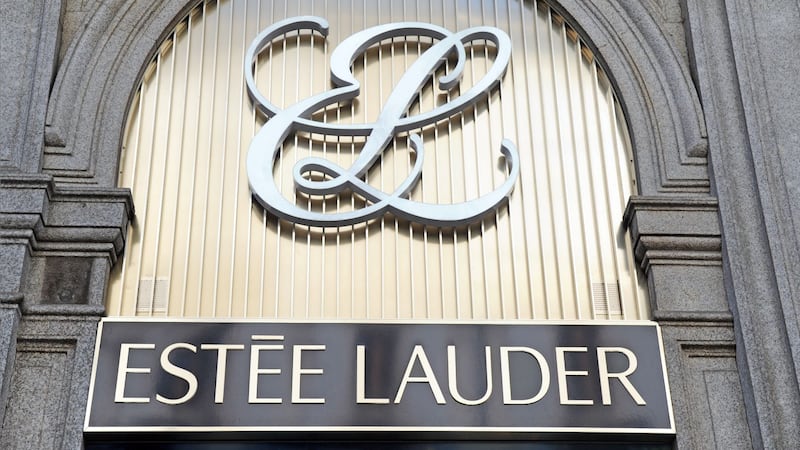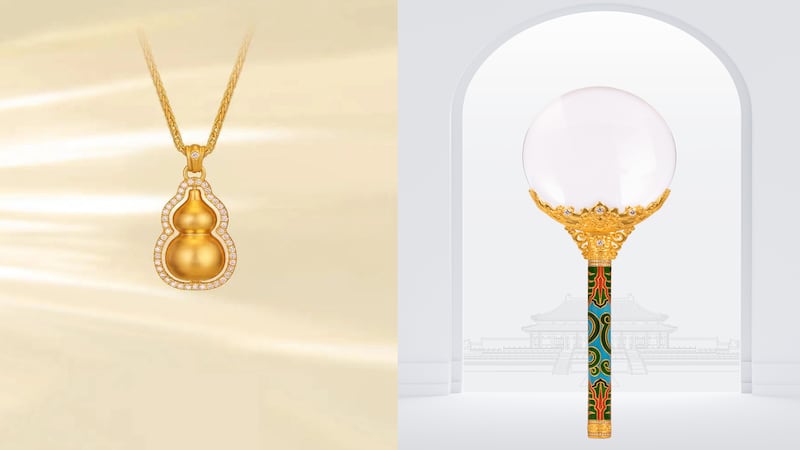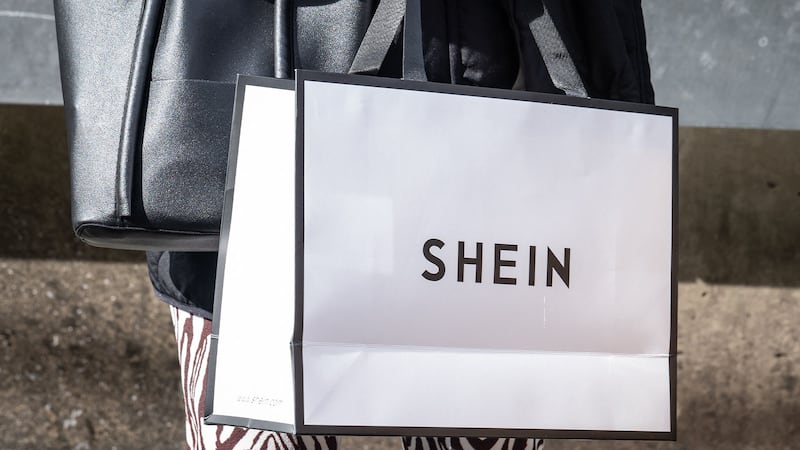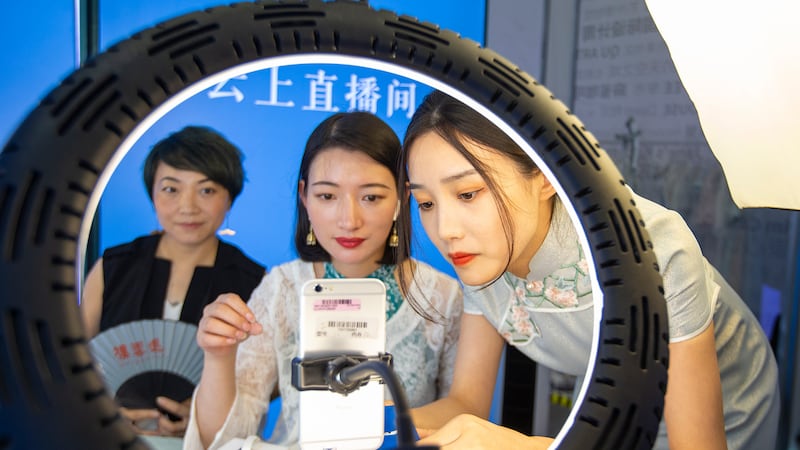Agenda-setting intelligence, analysis and advice for the global fashion community.
For evidence of Crocs’ popularity in China, look no further than the brand’s online moniker 洞门, or Dong Men.
Meaning cave entrance, it’s an affectionate reference to the many holes in Crocs’ signature foam clogs, and since China’s netizens gave Crocs the nickname in 2023, a hashtag with the term has been mentioned 70 million times on China’s social platforms.
That success isn’t a coincidence. At the height of the pandemic, when many of its peers halted branding investments in the country, Crocs doubled down on its marketing spend and released a steady stream of influencer partnerships and collaborations, ranging from a 2021 tie-up with Kentucky Fried Chicken featuring Crocs that looked and smelled like fried chicken to a capsule with artist Zhang Quan’s streetwear label Melting Sadness that garnered art world credibility.
That contrarian move has helped Crocs continue to grow in China. In 2024, its sales in the country rose 64 percent over the previous year, which already saw remarkable triple-digit growth, making Crocs an example of the rare international brand still finding success in the market.
ADVERTISEMENT
After decades of rapid expansion, during which China served as a growth engine for the international fashion industry, the country’s economy has slowed substantially. High unemployment, rising government debt and a struggling real estate sector have severely impacted consumer confidence and spending, with dire consequences for fashion. Only 5 percent of luxury brands, for instance, managed to generate positive revenue growth in the first 10 months of 2024, according to Bain.
From an outsider perspective, it appears that China’s opportunity streak has come to a screeching halt.
There is no doubt that the Chinese consumer economy has weakened. Consumer confidence has hovered close to all-time lows since 2022.
But the reality is more nuanced than headlines would suggest. Luxury sales in China are still higher than they were pre-pandemic, while part of their recent fall is due to Chinese consumers traveling again after the pandemic lockdowns.
Meanwhile, savings levels have grown substantially in the last few years, suggesting there’s money to be spent — if brands can entice shoppers to part with it.
In fact, a number of international brands across the price spectrum have posted considerable growth in recent quarters. Some of these brands benefit from their positioning as purveyors of quiet luxury, a sweeping trend emphasising subdued, classic styles that’s been especially popular in China. Others enjoy the advantages of arriving to the Chinese market later than their peers, leaving more room to grow.
But regardless of these circumstantial advantages, the fashion companies exhibiting resilience in China have all found a strategic market position by building an organic following online, investing in a localised plan of action for reaching shoppers and taking a hands on approach to their Chinese operations rather than merely delegating to third party operators.
This case study will look at how brands such as Crocs, Lemaire, Lululemon, Tibi and American Vintage are using these strategies to continue finding growth in the country. What’s changed in China perhaps more than anything is that the methods brands first used more than a decade ago to establish their footholds in the country are no longer relevant. Today, they need a new game plan.
“Fifteen years ago, you could launch in China perhaps with not the most exciting brand offering, but now if you haven’t got something that’s truly interesting, a really great product quality, strong SKU strategy, as well as a really good brand story, then don’t bother entering,” said Elisa Harca, cofounder of Red Ant retail agency.
